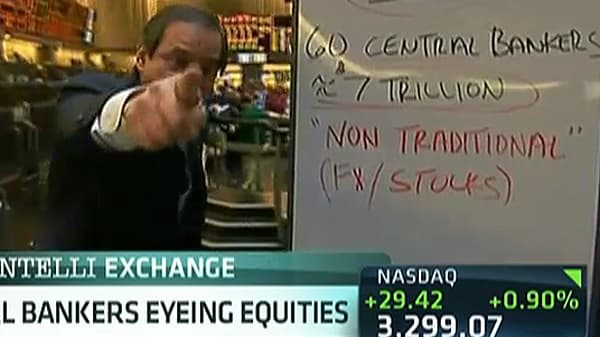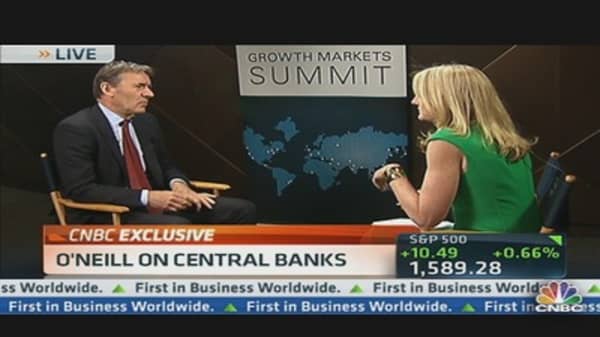Global central banks have not been shy about showing aggressiveness toward propping up the slowing economy.
(Read More: $2 Trillion Underground Economy May Save Recovery)
Japan, Israel and Sweden, along with dozens of others, said in a survey by Central Banking Publications and the Royal Bank of Scotland that they own equities and are preparing to increase their stakes.
While the Fed has not gone that far, the troubled economy likely will keep up the pressure to continue its efforts, which include holding its target funds rate near zero.
Policymakers will learn a bit more about the economy Friday when the initial print on first-quarter gross domestic product growth hits. However, even if the release shows growth above 3 percent, as many economists expect, signs are growing that the second quarter will not be nearly as robust.
"Our sense from recent client meetings is there's an ongoing assessment taking place about just how much expectations need to be scaled back," economists at RBC Capital Markets said in a note.
"Because keep in mind, it's not that recent data suggest an imminent or hard slowing is in tow. Rather, lofty expectations need a haircut," they added. "Stated differently, the overly optimistic got burned again."
(Read More: And Now for Some Good News: Jobless Claims Down)
RBC said it expects GDP to slow to 1 percent for the second quarter.
Throw in recent findings that income disparity between the rich and poor has grown since the stock market recovery, and it's even more incentive for the Fed at least to stay put—or perhaps go even faster.
"Practically speaking, we don't believe some magical number will dictate Fed policy. What we think the Fed wants to see is a backdrop that ceases to be so uneven," RBC said. "Such a jagged backdrop, if it continues, will keep the Fed fully engaged in buying up assets."






